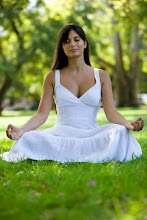Reiki (霊気 or レイキ , IPA: /ˈreɪkiː/) is a spiritual practice[1] developed in 1922 by Mikao Usui. After three weeks of fasting and meditating on Mount Kurama, in Japan, Usui claimed to receive the ability of "healing without energy depletion".[2] A portion of the practice, tenohira or palm healing, is used as a form of complementary and alternative medicine (CAM).[3][4] Tenohira is a technique whereby practitioners believe they are moving "healing energy" (a form of ki) through the palms.[5][6]
Reiki teachings claim that there is an inexhaustible, universal "life force" spiritual energy,[28][29] that can be used to induce a healing effect.[30] Believers say that anyone can gain access to this energy[31] by means of an attunement process[32] carried out by a Reiki Master.[33] Claims for such energy have no known theoretical or biophysical basis.[5][34][35]
Reiki is described by adherents as a holistic therapy which brings about healing on physical, mental, emotional and spiritual levels.[36] The belief is that the energy will flow through the practitioner's hands whenever the hands are placed on, or held near a potential recipient, who can be clothed.[37] Some teachings stress the importance of the practitioner's intention or presence in this process, while others claim that the energy is drawn by the recipient's injury to activate or enhance the natural healing processes.[38] Going further, the belief is that the energy is "intelligent",[39] making diagnosis unnecessary.
A second level of training, including another initiation, is said to equip the practitioner to perform Reiki treatments from a distance.[40] This method, it is stated, involves the use of special symbols to form a temporary connection between the practitioner and the recipient, regardless of location, and then to send the Reiki energy.[41] Techniques are also taught whereby Reiki can be sent to a specific point in time, either in the past or the future.[42]
g2nqte8mxa


No comments:
Post a Comment